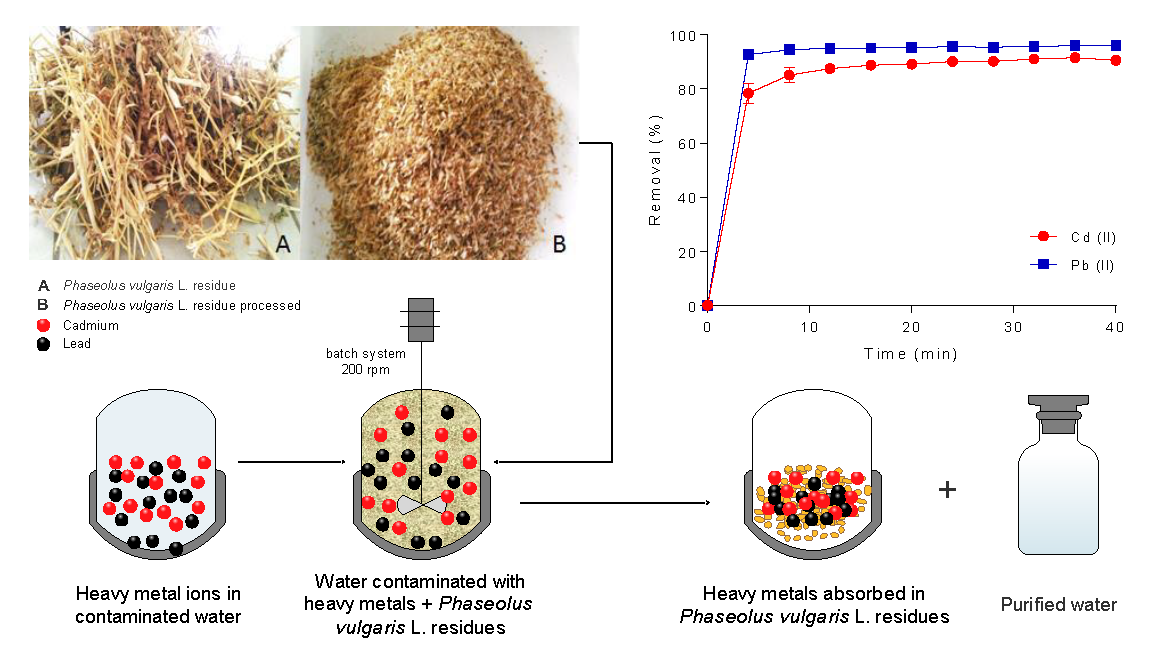 |
|
Industrial activities are the most common cause of water contamination by heavy metals, which endanger the quality of water resources and human health, due to their bioaccumulation capacity and consequent biomagnification. For this reason, the removal of metals from effluents before their discharge into the receiving water bodies is of crucial importance. This is why, in the present investigation, the biosorption processes of Cd (II) and Pb (II) in Phaseolus vulgaris L. (bean) agricultural residues (stems, leaves and leaf sheaths) were optimized. The influence of pH, biosorbent doses and initial concentration levels of metallic ions was evaluated using the response surface methodology (RSM). Quadratic models were developed for the percent removal of Cd (II) and Pb (II). Optimal biosorption conditions were attained at pH = 4.3, a 7.4 g/L biosorbent dose and an initial 9.14 mg/L concentration of each metal, achieving percent removals of 87.70 and 95.58% for Cd (II) and Pb (II), respectively. The FT-IR characterization showed that the functional groups involved in adsorption would be in the range of 2300 to 2400 cm-1. The biosorption kinetics were described by the pseudo first order model and the equilibrium data was adjusted to the Freundlich isotherm. An approximate desorption of 98% of Cd (II) and Pb (II) was achieved. The Phaseolus vulgaris L. residue showed a great biosorption capacity of Cd (II) and Pb (II) simultaneously.
Keywords: Phaseolus vulgaris L. residues, Biosorption, response surface methodology, Cd (II) and Pb (II) desorption.
|
|
 |

